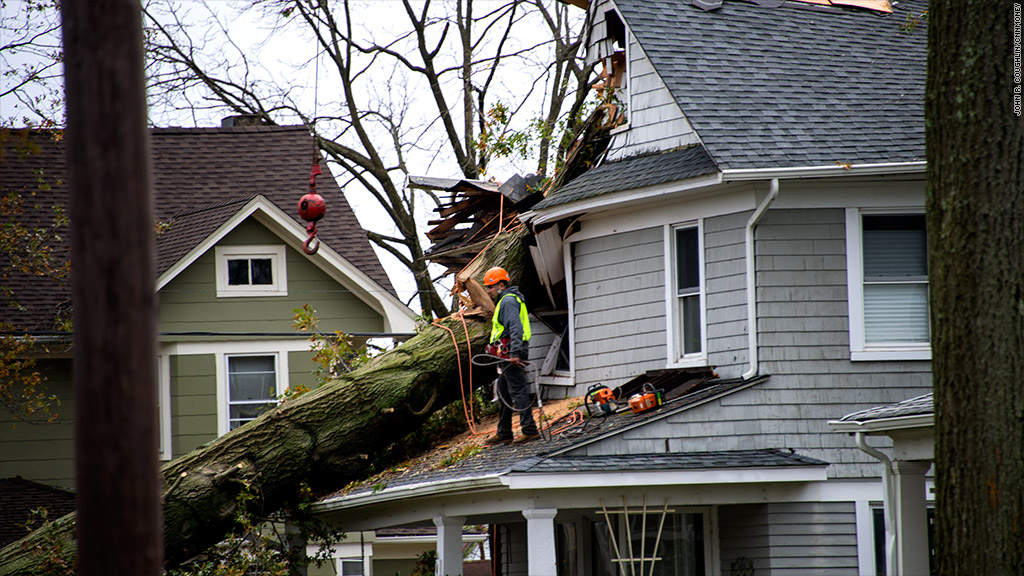
Before Superstorm Sandy, some of the hardest-hit areas in New York, New Jersey and Connecticut were experiencing a huge spike in foreclosures. But now that a moratorium on foreclosure activity in these disaster areas has been put in place, the foreclosure problems are about to get worse.
In the 34 counties that have been declared disaster areas, close to 125,000 homes were already in some stage of foreclosure or bank-owned at the end of October, a 54% increase from the year before, according to RealtyTrac, an online tracker of foreclosed properties.
Ever since the $25 billion mortgage settlement was reached last spring, lenders have been working through a heavy backlog of foreclosures that had been accumulating since the robo-signing scandal arose two years ago. The agreement cleared the way for banks to start filing paperwork on delinquent borrowers and pursue those who were further along in the foreclosure process.
Related: Banks give billions in relief under settlement
But Superstorm Sandy derailed that momentum.
Last week, mortgage giants Fannie Mae (FNMA) and Freddie Mac (FMCC) told their servicers to postpone any actions against defaulting borrowers in counties designated as disaster areas. Foreclosure auctions will be suspended for 90 days, as will evictions of borrowers who have already lost their homes to foreclosure but have yet to move out.

While the move will help buy some time for storm victims, it may be a significant setback to the housing recovery.
"Moratoriums being put into effect as a result of the storm will likely extend the already lengthy time to foreclose in these states," said Daren Blomquist, vice president of RealtyTrac.
Related: Fannie, Freddie suspend foreclosures in disaster areas
And all of those distressed properties will continue to weigh on home prices as the banks try to unload them in foreclosure auctions and sell them on the open market at a discount once the suspensions are lifted.
More properties will also likely fall into foreclosure as some storm victims choose to walk away from their homes rather than rebuild, said Brad German, a spokesman for Freddie Mac.
In past disasters like Katrina, however, fewer homeowners walked away after disasters than Freddie had anticipated, he said.
Related: Filing insurance claims after Sandy. What to expect
The three states hit hardest by the storm saw the highest annual increases in foreclosure activity in the country during the month of October, according to RealtyTrac. New Jersey's foreclosure activity climbed by 140% year over year, while New York's rose 123%. Connecticut, by comparison, had a rather tame but still significant 41% increase.
The results in the Northeast were not indicative of the country as a whole, however. Overall, foreclosure activity was down 19% compared with October 2011. And bank repossessions declined for the 24th month in a row.



